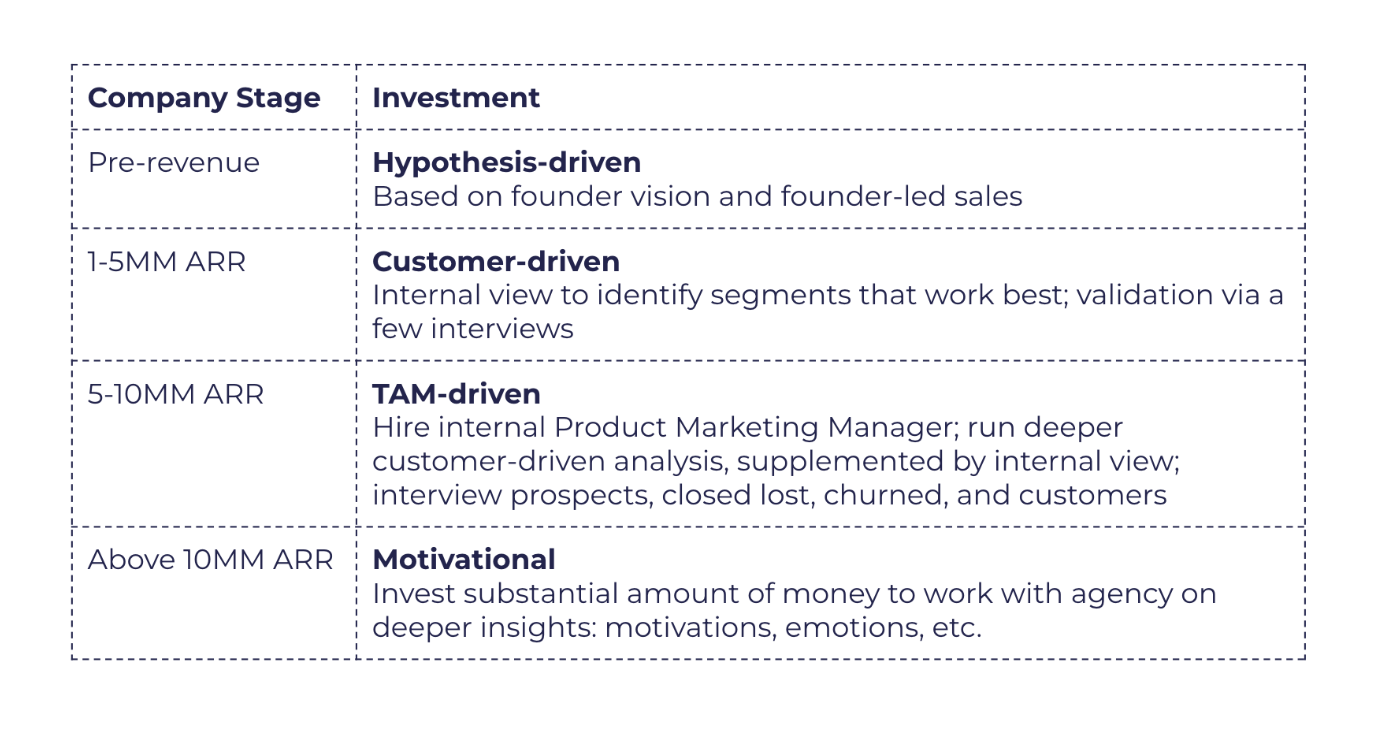In a world where every marketing dollar counts, the interplay between product marketing and revenue marketing can be the key to unlocking unparalleled growth for your business.
If you're a Growth Marketing or Revenue Marketing Leader, understanding the strategic dimensions of product marketing is not just beneficial – it's essential.
Why strategic product marketing is crucial for revenue marketing
Strategic product marketing is often misunderstood as a narrow, execution-driven function. However, its true potential lies in its strategic implementation. Think of it as the commercial conscience for product managers, bridging the gap between product and engineering on one side and sales, marketing, and customer success teams on the other.
With a deep understanding of your customers and products, experienced product marketers will identify high-value market segments, position your solutions accordingly, and develop the right messaging.

This in turn will then help revenue leaders influence the buyer's decision-making process and optimize their sales pitch. Ultimately, this results in increased lead flow, reduced sales cycles, and improved conversion rates across the funnel.
The two faces of product marketing
This raises the question: What is strategic product marketing? I distinguish two faces of product marketing, i.e. the more common narrow expression, i.e. "Operational Product Marketing," and the absolutely vital "Strategic Product Marketing."
Operational product marketing
This very tactical interpretation involves the execution of tasks mainly as a reaction to Product or Sales requests. These include the creation of product pages, one-sheets, and battlecards, as well as the reactive execution of product launches.
Strategic product marketing
In contrast, strategic product marketing focuses on laying the groundwork for successful corporate and, subsequently go-to-market (GTM) strategies:
- Conducting deep analyses of customer, competition, and buyer decision process
- Aligning product offerings with customer needs
- Defining your positioning and value proposition, including value pillars and differentiators
- Crafting your core messaging architecture
This proactive approach ensures that product, marketing, and sales efforts are aligned with the needs and behaviors of your target customers, and thus can unleash substantial upside potential for your revenue engine.

Practical examples
Example 1: Crossing the chasm
A company offering business software for SMEs initially found success with innovators but struggled to maintain this momentum with the pragmatists of the early majority.
In fact, crossing the chasm would require rethinking their entire GTM strategy, including:
- Reconsidering product priorities
- Redefining packaging
- Adjusting pricing
- Revamping messaging
- Qualifying leads more effectively
- Enhancing the sales pitch
Strategic product marketing played a crucial role in this transition. By segmenting the audience based on attitudes and motivations, the company developed a compelling story that engaged the desired audience, ultimately jump-starting the next growth S-Curve for this category leader.
Example 2: Targeting C-Level executives
Another company faced challenges engaging C-level executives despite having a strong product.
Strategic product marketing stepped in to:
- Identify the personas involved
- Understanding their specific needs and concerns
- Crafting a new strategic narrative that particularly resonated with this new target audience
This repositioning led to better engagement, more qualified leads, and larger deal sizes, demonstrating the power of targeted messaging.
The evolution of strategic product marketing
In my experience, one of the crucial questions for many startups and scaleups is: "What’s the right Product Marketing investment at my stage?" True enough, product marketing evolves as a company grows and its market environment changes.
Its sophistication progresses through several stages:

- Hypothesis-driven stage:Testing assumptions and gathering initial feedback
- Customer-driven stage:Adapting strategies based on customer feedback and behavior
- TAM-driven stage:Targeting the Total Addressable Market (TAM) with precision
- Psychographic/motivational stage:Understanding deeper buyer motivations and tailoring messages accordingly
Each stage requires continuous assessment of the market environment, competition, and customer base to adapt and optimize strategies.
Conclusion
Strategic product marketing acts as a form of "legal doping" for your B2B marketing and sales funnel. It generates more and better leads, higher conversion rates, and larger deal sizes.
When you focus on strategic analysis and alignment, your business can ensure that its marketing and sales efforts are efficient, effective, and ultimately, profitable.
Try it for yourself – you’ll be amazed. With strategic product marketing, you can enhance your go-to-market strategies, achieve better sales outcomes, and maximize growth potential in the highly competitive B2B market.
To learn more check out my recent blog post about the Product Marketing Strategy Framework.
About the author
Norman Rohr is a Founding Partner & CMO at B2B Practitioners, a growth advisory firm for B2B software businesses.
He’s an expert in strategic product marketing, go-to-market strategy, and marketing strategy, with a passion for B2B companies, which he developed at Google, Pixability, Uberall, and Xentral.
When Norman isn't busy leading marketing trends or promoting startups as an angel investor, he explores the world on long-distance bike tours or teaches Product Marketing at leading German universities.



 Follow us on LinkedIn
Follow us on LinkedIn



